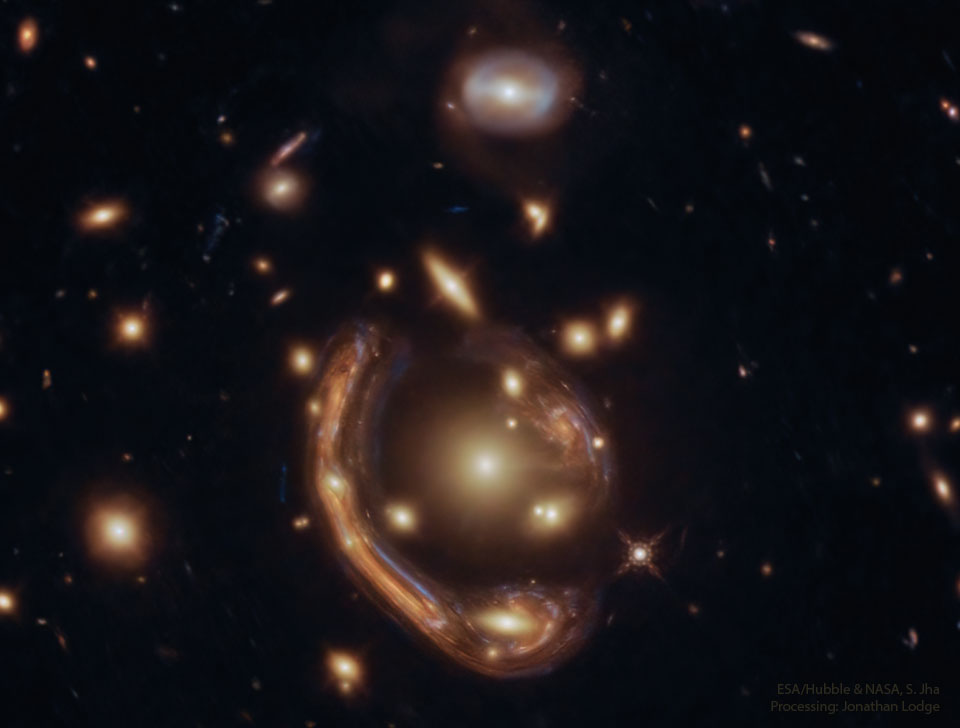2022年7月5日
A Molten Galaxy Einstein Ring
Image Credit: ESA/Hubble & NASA, S. Jha; Processing: Jonathan Lodge
Explanation: It is difficult to hide a galaxy behind a cluster of galaxies. The closer cluster’s gravity will act like a huge lens, pulling images of the distant galaxy around the sides and greatly distorting them. This is just the case observed in the featured image recently re-processed image from the Hubble Space Telescope. The cluster GAL-CLUS-022058c is composed of many galaxies and is lensing the image of a yellow-red background galaxy into arcs seen around the image center. Dubbed a molten Einstein ring for its unusual shape, four images of the same background galaxy have been identified. Typically, a foreground galaxy cluster can only create such smooth arcs if most of its mass is smoothly distributed — and therefore not concentrated in the cluster galaxies visible. Analyzing the positions of these gravitational arcs gives astronomers a method to estimate the dark matter distribution in galaxy clusters, as well as infer when the stars in these early galaxies began to form.
New APOD Social Mirrors in Arabic: On Facebook, Instagram, and Twitter
Tomorrow’s picture: star streamers
熔融星系的爱因斯坦环
影像提供: ESA/Hubble & NASA, S. Jha; 影像处理: Jonathan Lodge
说明: 要把星系藏在另一个星系团的后方,是有点难度的工作。因为较邻近的星系团之重力,行为像庞大的透镜,会弯曲遥远星系的影子,让它折绕过星系团边缘并发生显著的扭曲。这幅最近重新处理哈勃太空望远镜数据所得的主题影像,即可为佐证。影像中由许多星系聚成的星系团GAL-CLUS-022058c,把黄红色背景星系的身影会聚成环拱在中心周围的数片光弧。而从这组形状独特而有熔融爱因斯坦环昵称的透镜弧,至少可辨识出隶属于同一个背景星系的4重影子。前景星系团要产生这么平滑的光弧,通常其质量要大致均匀分布,而且不仅限于星系团的可见区域之内。分析这些引力透镜弧所在的位置,让天文学家得以粗估星系团内的暗物质如何分布,也可据以推断这些早期星系内的恒星何时开始形成。
新的APOD阿拉伯语社交镜像: Facebook、Instagram和Twitter
明日的图片: star streamers



